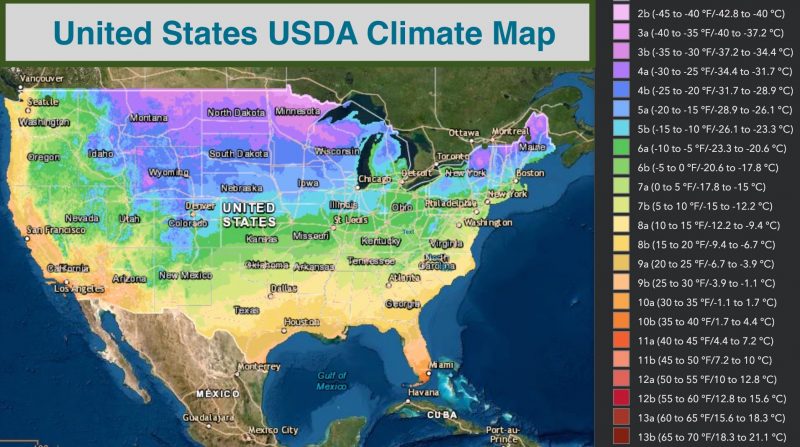Many plants have unique flowers, but few are as unusual and exotically beautiful as the Heliconia. So whether you’re looking for something a little different for your garden, or you’re interested in growing these flowers for cuttings, Heliconias are a great option.
Having said that, it’s important to note that Heliconias are not the easiest plants to care for. They’re native to tropical climates and require special attention if you want them to thrive in your own space. With that in mind, here’s some basic information on fertilizing, watering, and other important caring guidelines for Heliconia.
![]()
| Botanical Name | Heliconia |
| Common Name | Lobster-claws, Parrot-beaks |
| Plant Type | Perennial |
| Flower Color | Unique-shaped flowers that are either red, orange, yellow, or green |
| Size When Mature | 36-48 inches |
| Bloom Time | Spring, Summer, Fall |
| Sun Requirements | Full to Partial Sun |
| USDA Hardiness Zones | 10 – 11 |
| Soil PH Range | 6.0 – 6.5 |
| Soil Type | Acidic, loose, and well-draining |
| Water Needs | Low to Medium |
| Native Area | South America, Central America, and West Indies |
What You Need to Know About Heliconia
The Heliconia is a perennial plant part of the Heliconiaceae family, which contains around 200 different species. These plants are native to tropical regions in Central America, South America, and West Indies. However, they can now be found in warm climates worldwide.
They can grow quite large, reaching 36-48 inches in height. Additionally, the leaves are often large and paddle-shaped with red-colored edges. At the same time, the flowers are colorful and unique, typically resembling a parrot’s beak or a lobster’s claw that are either red, orange, yellow, or green. Their beautiful blooms pop out during spring through fall.
Heliconias are not easy plants to care for if you don’t live in a tropical climate. This is because they require warm temperatures, high humidity, and plenty of moisture. However, they can be relatively low-maintenance and easy to grow in the right conditions.
In addition, they are mildly toxic to humans and animals if ingested, so it’s important to keep them out of reach if you have small children or pets.
How to Care for Heliconias
Here’s everything you need to know about growing and caring for a thriving Heliconias:
Light
As mentioned, these plants are native to tropical regions and require a lot of sunlight. Therefore, they will do best in an area that receives full or dappled sunlight, as long as it gets six hours of sunlight a day. However, If you live in a cooler climate, you can grow them indoors near a south-facing window.
Water and Soil Needs
Heliconias need a lot of water and moisture to survive. The soil should be kept moist at all times. It’s best to water the plants in the morning, so they have time to dry out before nightfall. Planting them in an area with good drainage is vital because they don’t do well in standing water. It’s also important to mist the leaves regularly to maintain the necessary humidity levels.
On the other hand, the soil should be fertile, loose, and well-draining, with a pH range of 6.0 – 6.5. You can add organic matter to the soil to help with drainage.
Temperature Requirements
When it comes to temperature, Heliconias prefer warm weather and are hardy in USDA zones 10-11. They need temperatures that stay above 70 degrees Fahrenheit.
If they are subjected to temperatures below 50 degrees Fahrenheit, they will have a hard time surviving. Ideally, they should be grown in an environment with consistent temperatures to avoid any stress on the plant and to promote growth.
Fertilizer
The best fertilizer to use on a Heliconia is a slow-releasing fertilizer with a 2-1-2 NPK ratio. Fertilizing needs to be done at least every 2 months during spring and summer. This is their most active and growing season, and they’ll benefit from the extra nutrients given to them at this time.
Common Diseases
The diseases that Heliconia is most susceptible to are those that attack the leaves. These include leaf spots and bacterial wilt.
A leaf spot is when brown or black spots appear on the leaves and are typically caused by too much moisture. The best way to prevent this is to ensure you don’t over-moisturize the plant and to water it in the morning so the leaves have time to dry out.
Bacterial wilt, on the other hand, is when the plant’s leaves start to wilt and die. This is usually caused by bacteria that enter through the roots or wounds in the plant. The best way to prevent this is to ensure you have well-draining soil and to avoid wounding the plant.
Heliconia Propagation
Heliconia propagation is normally done through divisions or rhizomes.
To propagate by division, simply divide the plant into several sections, making sure each section has roots and leaves. You can then plant these divisions in individual pots filled with moist soil.
To propagate via rhizomes, cut a 4-inch piece of rhizome from the plant. These are the thick, fleshy roots that the plant grows. Make sure to cut it from an area that has new growth. Then, plant the rhizome in a pot filled with moist soil and keep it warm until it begins to grow.
Once you have your Heliconia propagated, you can transplant it into your garden or keep it in a pot. When transplanting, remember to plant it in an area that receives full or dappled sunlight and has well-draining soil.
You May Also Like: California Bee Plant
